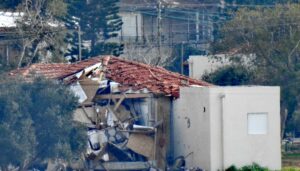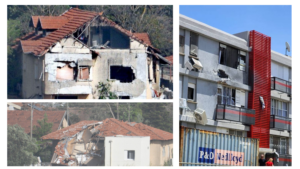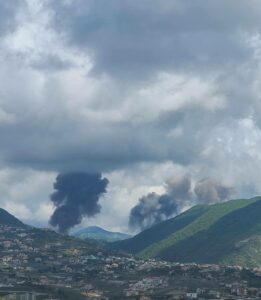Since the Second Lebanon War, it has been possible to identify a clear effort by Iran and its affiliates to develop new capabilities and equip themselves with advanced weapons. This effort included a significant increase in the quantities of rockets and missiles, (to improve their survivability and saturate the Israeli air defense systems) deepening the camouflage patterns through the use of the civilian population as human shields and the construction of underground arrays. But the main developments were in three additional areas: equipping with precision weaponry (missiles, Unmanned aerial vehicle, drones); equipping with improved air defense means; and building the ability of forces infiltration into Israeli territory on a relatively large scale.
These steps in force building have raised the question of whether they are intended to improve the effectiveness of the original combat concept or are also accompanied by a change in concept and theory of victory. A number of researchers raised the possibility that Iran’s affiliates adopted a different theory of victory, different from that of a “victory through not losing” of recent years. A new theory of victory based on “Denial of Capabilities”.
Both theories are based on a deep recognition of Israel’s military-technological superiority, identified mainly with air attack capability and the extensive use of precision weaponry. But what made their practical conceptualization possible was the additional understanding that this superiority could be offset by attacking Israel’s weak points – the sensitivity to loss of life; the difficulty of dealing with a prolonged war; the limitations that arise from the priority given to the use of air power (due to its basic limitations and the need for accurate intelligence) and the reluctance to deploy ground maneuvering forces.
But unlike “victory through not losing”, “Denial of Capabilities” is a more advanced stage of realizing the intelligence-attack combination: in creating a systemic and strategic effect through a precise attack on a very large scale. It is different from “victory through not losing” in that it is directed against whole arrays of very diverse targets (and not against an aggregated collection of targets of different types) and in that it requires very large stocks of precise armament and its use in a relatively short time.
Another direction for the realization of the intelligence-attack combination can be manifested by the assistance of the precise armament for the maneuvering move into the invaded territory. Such assistance can be in the form of a preliminary fire for the maneuver or through the activation of fire at the same time as the maneuver. Such activation requires a high level of coordination in the intelligence-attack combination due to the high dynamism of the maneuvering move.
It seems that Hamas, in the current attack operation, has implemented this new concept.
Hamas released a video, about one minute and forty seconds long, showing how the integrated terrorist attack on Israel began, step by step. The video opens with a shot of an armed aircraft dropping a weapon on the roof of an IDF military post on the border of the Gaza Strip. After that, a barrage of rockets from the Gaza Strip towards the territory of Israel was seen, and parallel to them, paragliders carrying armed terrorists of the organization were parachuted into the territory surrounding Gaza. After documenting the paragliders, the video shows the mounted infiltration of the terrorists on top of a convoy of white van-type vehicles, armed with machine guns. In addition, a foot infiltration of terrorist squads armed with RPGs is seen. At this point, an explosion is seen at the security fence between Israel and Gaza, apparently from an anti-tank missile, which creates an opening in the fence through which Hamas begins to insert squads of armed terrorists on motorcycles.
That is, the equipping of precision weapons in large quantities, supplied by Iran, the integration of the attack with precise intelligence and live intelligence streamed by drones. The bank of targets and the forms of the attack were diverse: outposts, towns, bases, fences, including critical damage to the communication towers which were pinpointed and documented by drones and which derailed the IDF’s response, by vehicles, motorcycles, parachute and on foot, using rocket fire at the same time as the ground attack which also made the immediate response difficult.
This implementation of the intelligence-attack combination can lead, in the event of an IDF ground invasion of the Gaza Strip, to an attempt to systematically and extensively attack ground forces in order to contain the maneuvering move as a main element of defense in this new theory.
Hezbollah itself has been engaged for many years in serious preparations to curb the Israeli maneuver through a defensive concept based on a permanent, dense, deep and wide defense system, which combines obstacles (mines and roadside bombs) and counterfire (anti-tank missiles and rockets) as a system of “traps” intended to be used as “maneuver inhibitors”. It is possible that a basic capability in this area will be based on the analysis of the possible axes of penetration, locating points that could disrupt the maneuver and fire on the basis of an update on the movement of forces.
The idea of introducing forces into Israeli territory on a relatively large scale (as opposed to infiltration for the purposes of terrorist attacks) began to appear in Hezbollah’s military thinking at a relatively late stage (around 2011). At the same time, it turned out that a similar idea also exists in Hamas. In both organizations, dedicated forces were established for this matter (the Radwan force in Hezbollah and the Nukhba force in Hamas) and offensive tunnels were dug, both on the border with Lebanon and on the border with the Gaza Strip, which were supposed to be used for the infiltration of forces into Israeli territory.
It seems that the Israeli attitude to the matter of the practical threat of the Iranian precision project focuses in recent years mainly on the possibility that Israel will face a multi-arena attack of precision missiles that will damage its national infrastructure, civilian and military. This possibility received a relatively serious discussion in Israel that focused on its effects, the extent of the threat it poses and the need to prepare for it. But there were additional threat elements that were not analyzed enough. Related to the development of the capability to stop and disrupt the Israeli maneuver as well as the ability to carry out a deadly maneuver of the organizations into Israeli territory. The more significant challenge of the Iranian entry into the precision club is related to the creation of innovative, flexible, creative operational patterns, both in routine (between the wars) and in conflicts and war.
Guest Writer – Mayan Sarnat
This article was written with the help of theoretical concepts taken from Ita Brun’s article of the DADO Research center: מנשק חכם לצבא חכם: ההשלכות התפיסתיות של הכניסה האיראנית למועדון הדיוק






